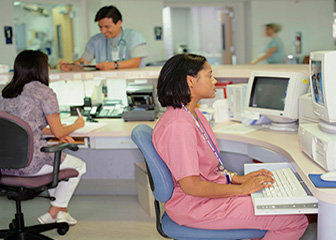Summary

| Quick Facts: Medical Transcriptionists | |
|---|---|
|
$32,900 per year
$15.82 per hour |
|
| Postsecondary non-degree award | |
| None | |
| None | |
| 95,100 | |
| 6% (Slower than average) | |
| 5,600 | |
What Medical Transcriptionists Do
Medical transcriptionists listen to voice recordings that physicians and other health professionals make and convert them into written reports. They interpret medical terminology and abbreviations in preparing patients’ medical histories, discharge summaries, and other documents.
Work Environment
Medical transcriptionists work for hospitals, physicians' offices, or third-party transcription service providers, or they are self-employed. Many transcriptionists work from home offices, receiving dictation and submitting drafts electronically.
How to Become a Medical Transcriptionist
Medical transcriptionists typically need postsecondary training. Prospective medical transcriptionists must have an understanding both of grammar and of word-processing software.
Pay
The median annual wage of medical transcriptionists was $32,900 in May 2010.
Job Outlook
Employment of medical transcriptionists is expected to grow 6 percent from 2010 to 2020, slower than the average for all occupations.
Similar Occupations
Compare the job duties, education, job growth, and pay of medical transcriptionists with similar occupations.
O*NET
O*NET provides comprehensive information on key characteristics of workers and occupations.
Contacts for More Information
Learn more about medical transcriptionists by contacting these additional resources.








